En búsqueda de la Energía Oscura con Euclid y experimentos cosmológicos de cuarta generación
Santiago Casas
Postdoctoral Researcher
TTK, RWTH Aachen University





https://www.pablocarlosbudassi.com/2021/02/the-infographic-and-artistic-work-named.html

Vista logarítmica del Universo


Estrellas cercanas y la Vía Láctea
Grupo Local y estructuras de gran escala
https://medium.com/starts-with-a-bang

El fondo cósmico de microondas: "Una foto del Big Bang"
Planck 2018 CMB Temperature map (Commander) . wiki.cosmos.esa.int/planck-legacy-archive/index.php/CMB_maps

Grandes Estructuras no-lineales: Materia Oscura y Bariones
Illustris Simulation: www.nature.com/articles/nature13316
Text
La evolución del Universo

- Inflación
- Bariogénesis
- Recombinación
- Hidrógeno Neutral
- Estructuras de Materia Oscura
- Galaxias
- Expansión acelerada: Energía Oscura

Text

Qué sabemos hasta ahora?
Text
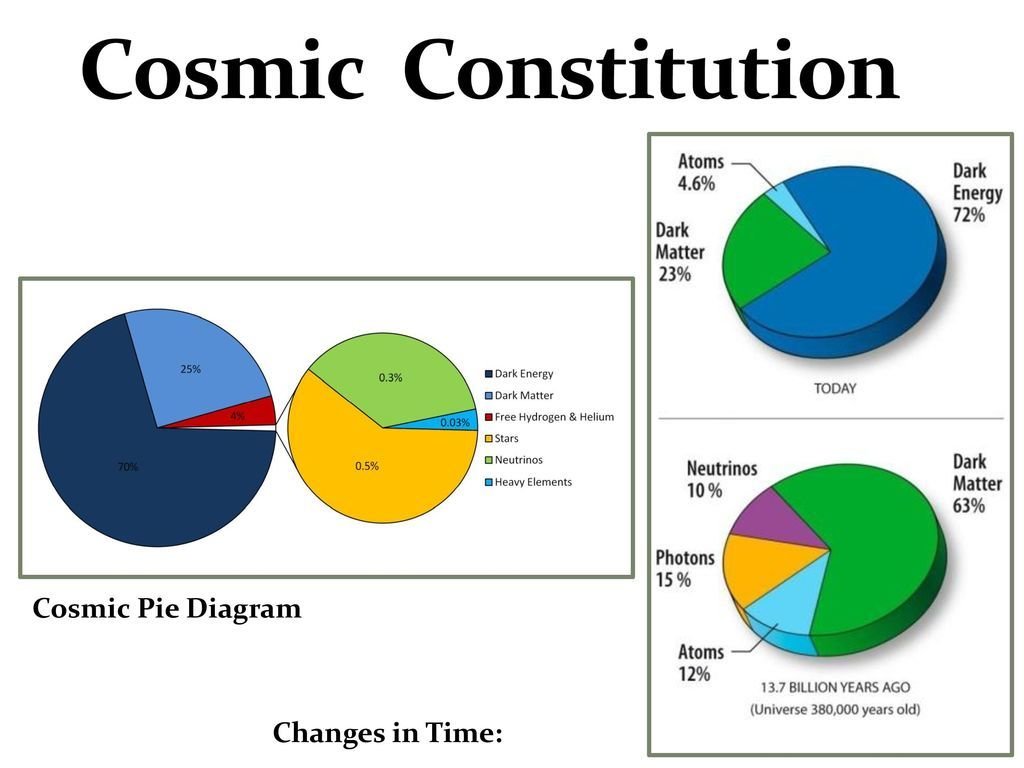
- La composición del Universo al inicio:
- ~60% Materia Oscura (DM)
- ~ 12% Atomos normales (bariones)
- ~ 10% Luz (fotones)
- 10% Neutrinos
- La composición del Universo ahora:
- ~70% Energía Oscura (DE)
- ~ 25% Materia Oscura
- ~ 5% Bariones

Santiago Casas @ NineHubCR, 17.04.21

La composición del Universo
- Del 5% de materia normal en el Universo hoy en día:
- 99% es Hídrogeno y Helio creados en el Big Bang
- La mayoría (>70%) de los átomos están en el espacio intergaláctico, no en estrellas o planetas
- Elementos pesados fueron creados en supernovas
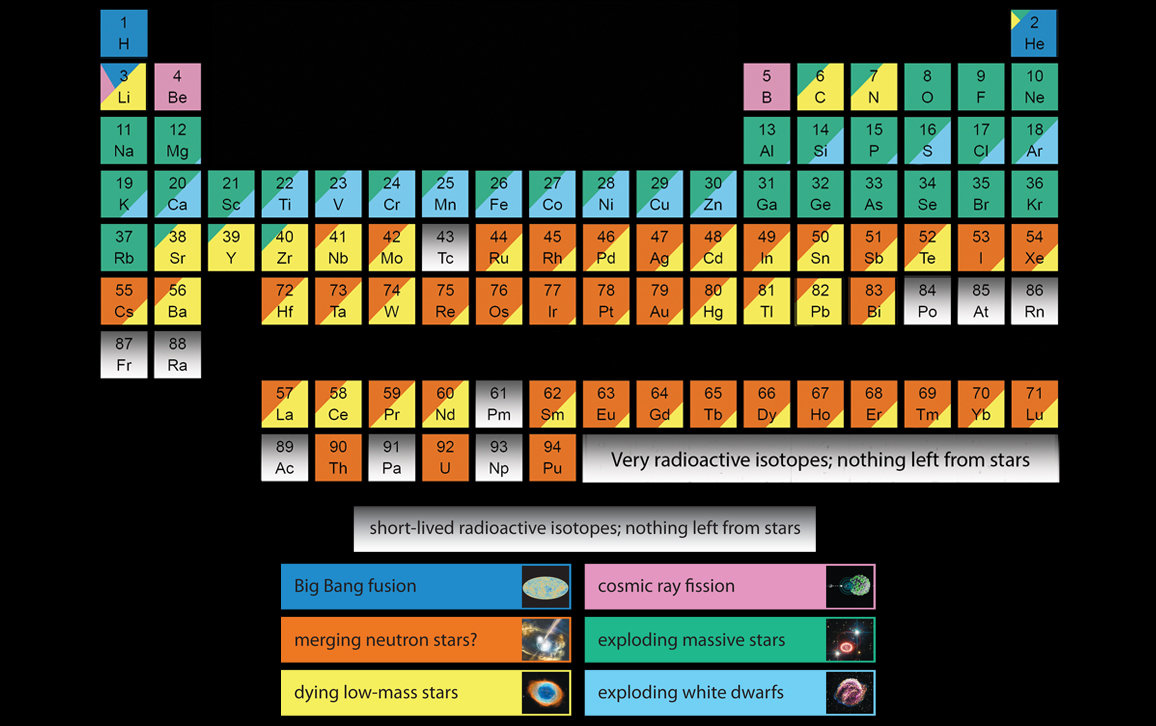
Text

Santiago Casas @ NineHubCR, 17.04.21

La composición del Universo
- Como sabemos que la materia oscura no está hecha de bariones?
- Física nuclear de partículas: Big Bang Nucleosynthesis
- Sistema de O.D.E acopladas que podemos resolver sabiendo las constantes fundamentales hoy día.
Text

Problema del Litio?
Los primeros 3min del Universo

Santiago Casas @ NineHubCR, 17.04.21

Fondo Cósmico de Microondas
Confirmado con observaciones del fondo de luz microondas emitidas ~380.000 años después del Big Bang
Text

Vemos su polarización
Vemos su temperatura
Con fluctuaciones de 1 parte en 100.000 sobre (2.7 Kelvin)

Santiago Casas @ NineHubCR, 17.04.21

Los inicios históricos de la cosmología
- Einstein (1915) desarrolla la Teoría General de la Relatividad (TRG).
- El universo se creía estático y eterno (Einstein introduce la constante cosmológica Lambda)
- Se descubre que muchas nebulosas en realidad son galaxias muy lejanas
- Hubble (con datos de Leavitt y Slipher) descubren que las galaxias se alejan
- Lemaître desarrolla teoría del Big Bang a partir de una solución exacta a la TGR.
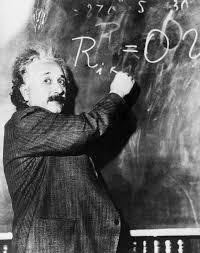
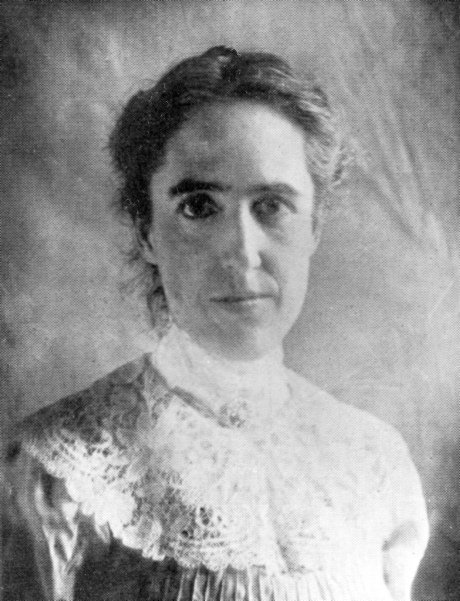
Henrietta Swan Leavitt
Text

Santiago Casas @ NineHubCR, 17.04.21

Las Ecuaciones de Einstein

Geometría y curvatura del espacio-tiempo
(funciones y derivadas de la métrica)
Contenido de energía y masa (momento) del Universo
métrica
Constante cosmológica
(energía del vacío?)
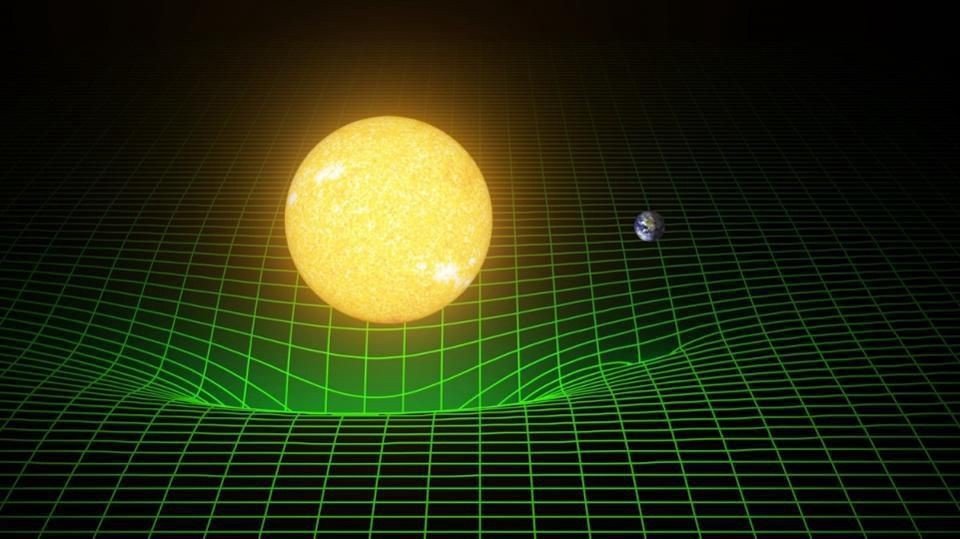
Text

Santiago Casas @ NineHubCR, 17.04.21

La escalera de distancias
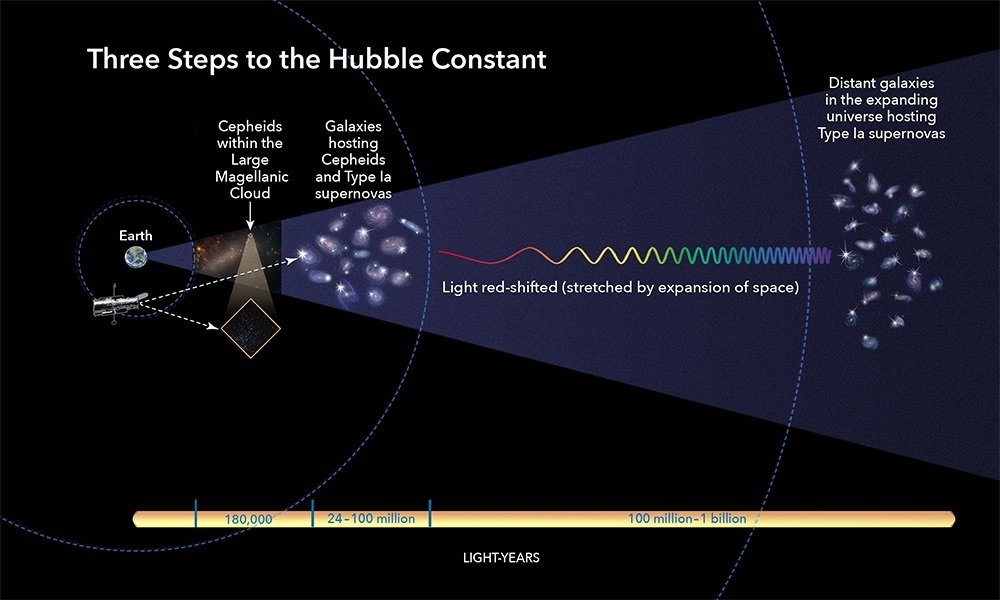



- Leavitt mide la distancia a las Cefeidas usando periodicidades.
- Slipher usa espectroscopía para medir redshifts y velocidades de galaxias.
- Hubble asocia velocidades a distancias para crear "la ley de Hubble"
Text

Santiago Casas @ NineHubCR, 17.04.21

Big Bang Theory y las ecuaciones de Friedmann


- Lemaître extrapola la expansión hacia atrás y propone un "hot Big Bang".
- Friedmann, Robertson y Walker desarrollan solución exacta a la TRG de Einstein.
- Métrica conocida como FLRW, es máximamente simétrica, homógenea e isotrópica.
- La llamada ecuación de Friedmann relaciona el parámetro de Hubble con los contenidos del Universo.
- Así sabemos su composición al medir su geometría.
Text

Santiago Casas @ NineHubCR, 17.04.21

El descubrimiento del CMB
- Penzias and Wilson descubren en 1964 accidentalmente radiación de todas las direcciones del cielo.
- Había sido predicha por Gamow et al. en los 50's.
- Ganan en 1978 el premio Nobel.
- Confirma la teoría del "hot Big Bang" y marca el inicio de la cosmología como ciencia moderna.


Text

Santiago Casas @ NineHubCR, 17.04.21

El CMB y parámetros cosmológicos
- Espectro de potencias de fluctuaciones
- \(\ell\) decomponer parches del cielo en multipolos.
- Montañas y valles del espectro son muy sensibles a los componentes del Universo
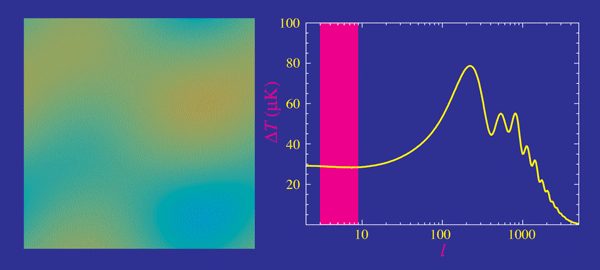

Text

Santiago Casas @ NineHubCR, 17.04.21

Parámetro de Hubble


- Hubble mismo mide : 500 km/s/Mpc
- Difícil determinar distancias y velocidades de galaxias lejanas.
- Actualmente la medición en CMB está en tensión con las pruebas locales
Text

Santiago Casas @ NineHubCR, 17.04.21

Supernovae Tipo Ia
- 1998 dos equipos miden Supernovae Type Ia.
- En una curva de velocidades vs. distancia se puede determinar la ley de Hubble.
- Medición no calza con las creencias del momento, explicación: Universo con curvatura negativa o "Energía Oscura".
- 2011: Perlmutter, Schmidt, Riess ganan premio Nobel por descubrimiento de la expansión acelerada.


Text

Santiago Casas @ NineHubCR, 17.04.21

Cosmología de Concordancia

Modelo cosmológico de concordancia juntando todas estas observaciones:
- Universo es plano.
- Materia oscura y visible representa sólo un 30% de la masa-energía.
- El Universo se expande aceleradamente.
Text

Santiago Casas @ NineHubCR, 17.04.21

Modelo estándar \(\Lambda\)CDM
- Modelo estándar del Universo: \(\Lambda\)CDM: Lambda-Cold-Dark-Matter
- \(\Lambda\)CDM mejor fit a las observaciones actuales.
- Modelo predictivo con pocos parámetros.
- Lentes
- CMB
- Cúmulos
- Supernovae
- Clustering

Cosmología de Concordancia:
90 años después ->
Text
Planck 2015 measurements


La evolución del Universo
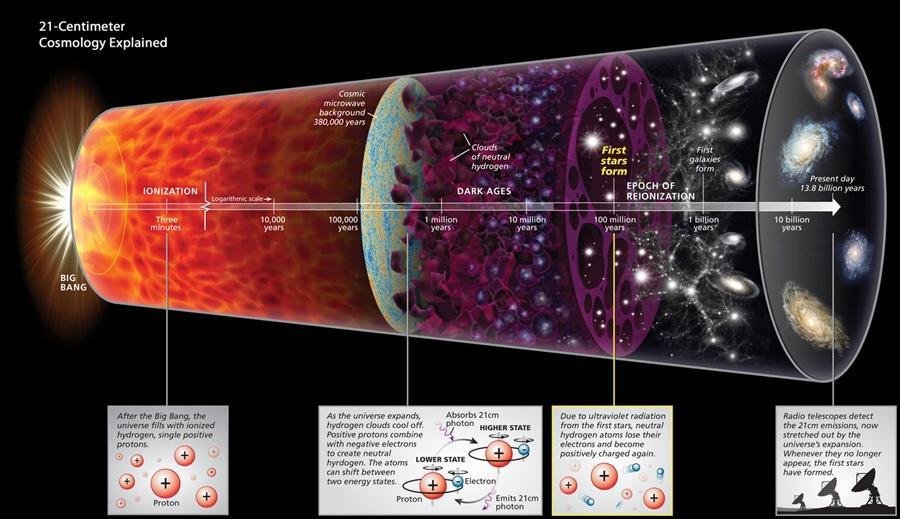
Text

Santiago Casas @ NineHubCR, 17.04.21

Einstein's General Relativity
- \(\Lambda\)CDM is still best fit to observations.
- Some questions remain:
- \(\Lambda\) and CDM.
- Cosmological Constant Problem:

O(100) orders of magnitude wrong
(Zeldovich 1967, Weinberg 1989, Martin 2012).
Composed of naturalness and coincidence
sub-problems, among others.
Quantum Gravity?

Text

Santiago Casas @ NineHubCR, 17.04.21

Tensions in the \(\Lambda\)CDM model
- \(\Lambda\)CDM is still best fit to observations.
- Some questions remain:
- H0 tension, now ~5\(\sigma\)


Planck, Clusters and Lensing tension on clustering amplitude \(\sigma_8\)
KiDS 1000 Cosmology, arXiv:2010:16416
L.Verde, et al 2019. arXiv:1907.10625
Text

Santiago Casas @ NineHubCR, 17.04.21

How do we study the Large Scale Structure?
- With Supernovae and CMB already at the highest possible precisions, what is next?
- Large Scale Structure of the Universe -> Next frontier of precision science
Text


Santiago Casas @ NineHubCR, 17.04.21

How do we study the Large Scale Structure?
- In Large Scale Structure, every galaxy is just a point in a large field of density and velocity
- With current telescopes we can look further out billions of years

Text


How do we study the Large Scale Structure?
- In Large Scale Structure, every galaxy is just a point in a large field of density and velocity
- With current telescopes we can look further out billions of years
- Galaxies trace density and velocity of underlying dark matter

Text

Santiago Casas @ NineHubCR, 17.04.21

How do we study the Large Scale Structure?
- Statistical correlations among these points give us information about the components of the Universe.
- The two-point correlation function is the most important statistical probe.

Text

Santiago Casas @ NineHubCR, 17.04.21

How do we study the Large Scale Structure?

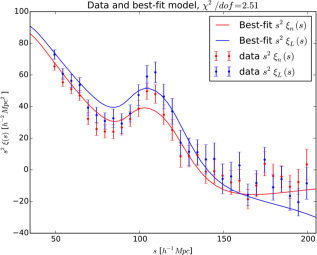
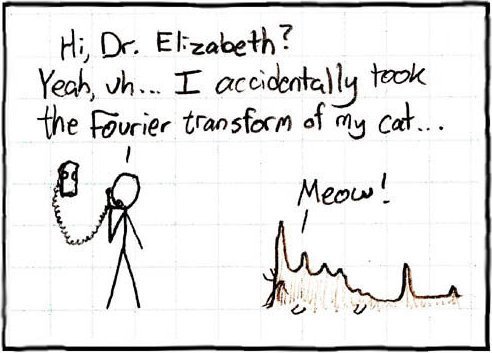
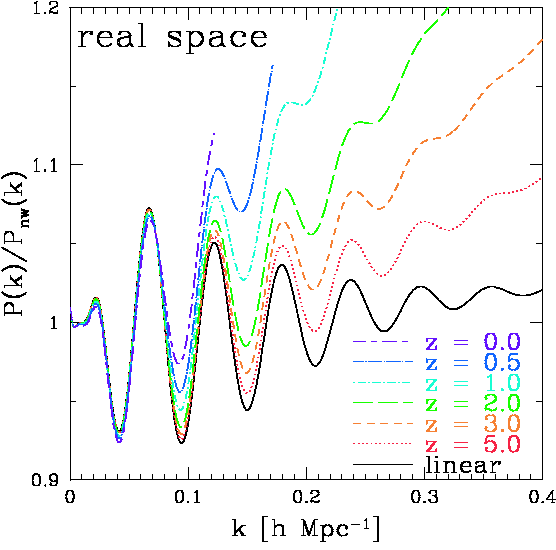
Fourier Transform
Galaxy positions and velocities
2-pt-correlation function
Power spectrum
Text

Santiago Casas @ NineHubCR, 17.04.21

The power spectrum in Large Scale Structure


BAO
Clustering
RSD

Spec-z
Euclid Collaboration, IST:Forecasts, arXiv: 1910.09273
Text

Santiago Casas @ NineHubCR, 17.04.21

The Power Spectrum


- Until now, only a few scales of the power spectrum have been measured independently.
Text

Santiago Casas @ NineHubCR, 17.04.21

The Power Spectrum

- Until now, only a few scales of the power spectrum have been measured independently.
- Future next-generation galaxy surveys, such as Euclid, will measure it with high-precision.
Text

Santiago Casas @ NineHubCR, 17.04.21

The Present and Future of Cosmology
Text

Santiago Casas @ NineHubCR, 17.04.21

The Euclid Space Satellite

Text

Santiago Casas @ NineHubCR, 17.04.21

The Euclid Space Satellite
Localizado en el punto de Lagrange L2

Text

Santiago Casas @ NineHubCR, 17.04.21

Future Galaxy Survey Missions

Text

Santiago Casas @ NineHubCR, 17.04.21

The Euclid Before and After

Text

Santiago Casas @ NineHubCR, 17.04.21

Large Scale Structure



Predicting future constraints, based mostly on the power spectrum
Text

Santiago Casas @ NineHubCR, 17.04.21

Complementarity of probes
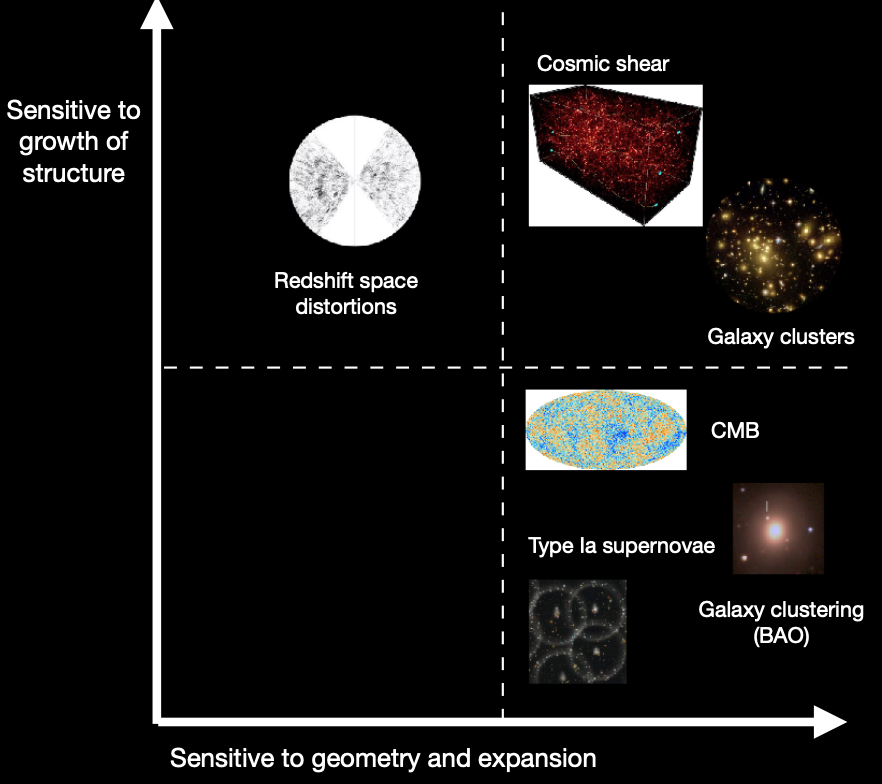
Credits: Sunayana Bhargava
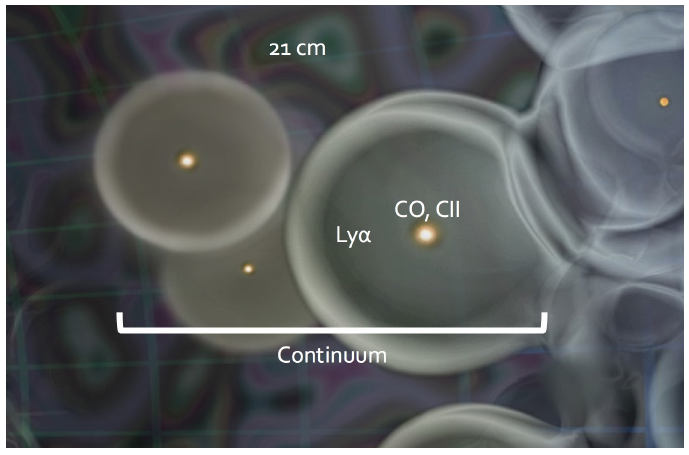
21cm Intensity Mapping
Text

Santiago Casas @ NineHubCR, 17.04.21

What is the 21cm line?
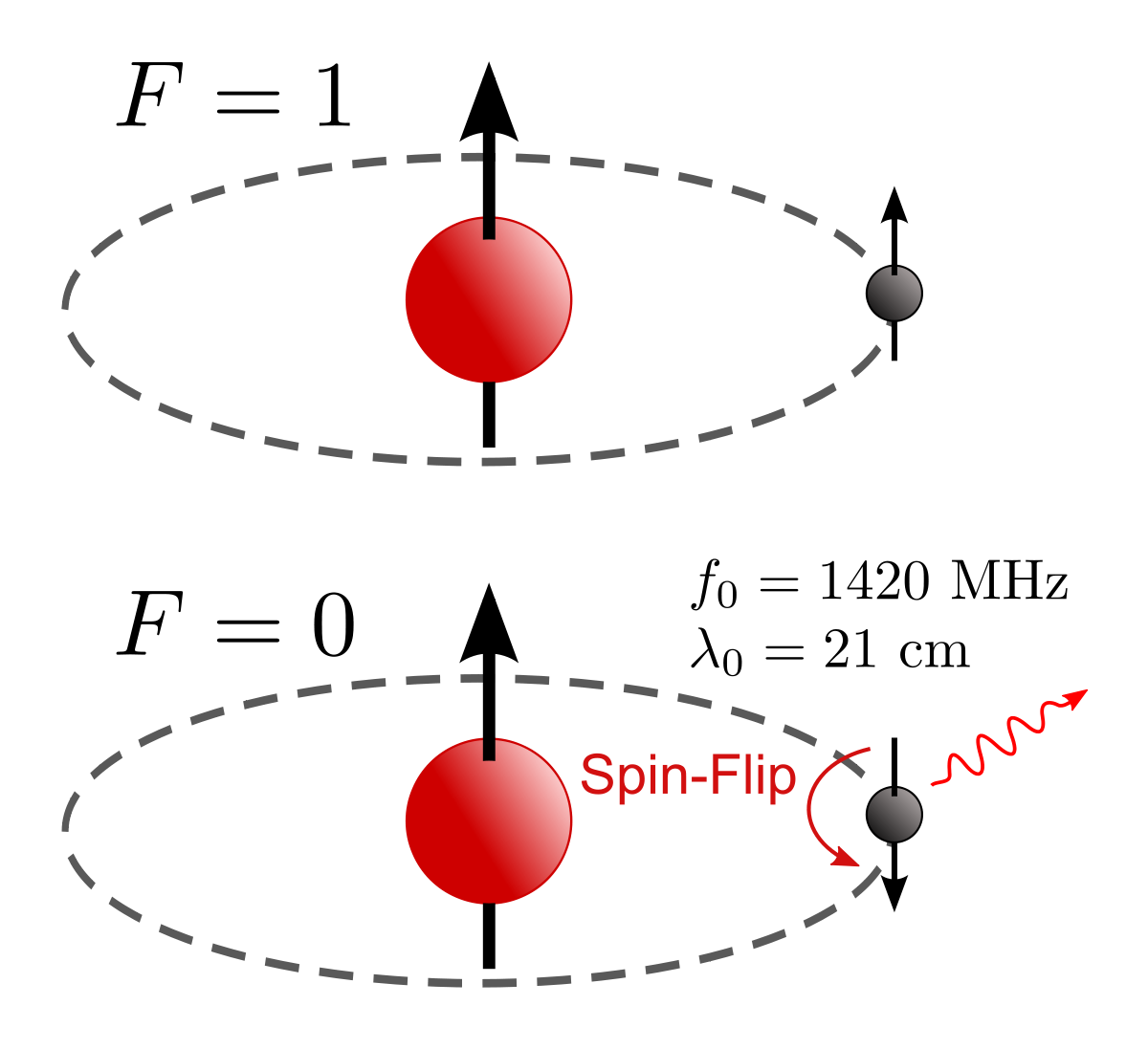
- Hyperfine transition line in neutral Hydrogen
- Spin-flip transition: very rare (once every ten million years)
- However, there is so much Hydrogen in the Universe, that we can observe this constantly.
- At 1420 MHz, it falls into the radio spectrum of EM waves.
- Therefore, we need Radioastronomy to study it!
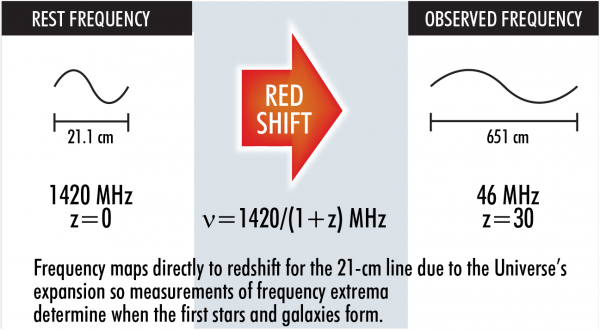
Text

Santiago Casas @ NineHubCR, 17.04.21

Cosmology with the 21cm line

- Cosmology with 21cm Intensity Mapping will close a gap in our understanding of the Universe!
- Access to redshifts never explored before!
Text

Santiago Casas @ NineHubCR, 17.04.21

SKA Observatory, the next frontier!

Text

Santiago Casas @ NineHubCR, 17.04.21

SKA Phase 1 - expected for 2030

Image credit: Isabella Carucci
Text

Santiago Casas @ NineHubCR, 17.04.21

SKA Phase 1 - expected for 2030

Text

Santiago Casas @ NineHubCR, 17.04.21

Tensions in \(\Lambda\)CDM




- Tensions in Hubble expansion parameter
- Tensions in Lensing
Text

Santiago Casas @ NineHubCR, 17.04.21

Text
Other Future Probes
Text




LSST Vera Rubin Observatory: Weak Lensing
DESI: Galaxy Clustering
LiteBird: CMB
LIGO: Gravitational Wave Sirens

Santiago Casas @ NineHubCR, 17.04.21

Alternatives to \(\Lambda\)CDM
Ezquiaga, Zumalacárregui, Front. Astron. Space Sci., 2018
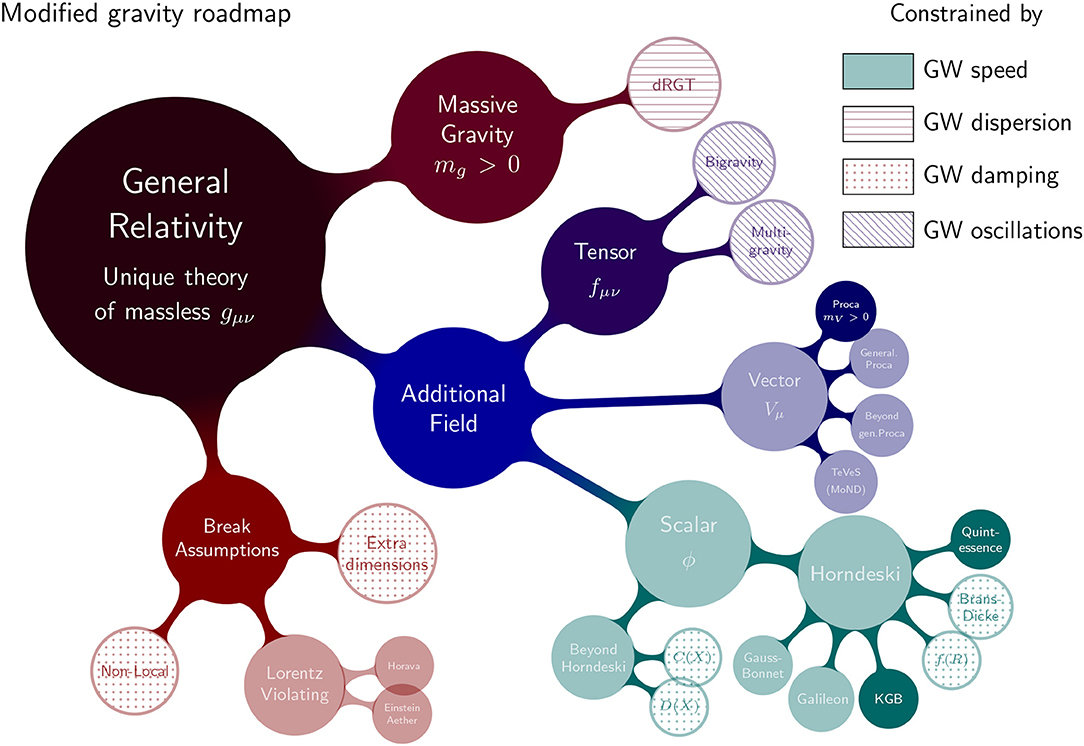
Text

Santiago Casas @ NineHubCR, 17.04.21

Parametrized modified gravity

In \(\Lambda\)CDM the two linear gravitational potentials \(\Psi\) and \(\Phi\) are equal to each other
We can describe general modifications of gravity (of the metric) at the linear level with 2 functions of scale (\(k\)) and time (\(a\))
Only two independent functions
Text

Santiago Casas @ NineHubCR, 17.04.21

Late-time parametrization: Planck constraints


- Using Planck satellite data in 2015 and 2018, constraints were obtained on these two functions \(\mu\) and \(\eta\).
- Late-time parametrization: dependent on Dark Energy fraction
Planck 2015 results XIV, arXiv:1502.01590
Planck 2018 results VI, arXiv:1807.06209

Casas et al (2017), arXiv:1703.01271
Forecasts for Stage-IV surveys in:
Text

Santiago Casas @ NineHubCR, 17.04.21

Weak Lensing
- Influence of matter-energy: galaxies align and get distorted
- Correlation function
of cosmic shear: information about matter content
and expansion.


Directly constrains MG function \(\Sigma\) through Weyl potential
Text

Santiago Casas @ NineHubCR, 17.04.21

Large Scale Structure and Neutrinos
- Neutrinos affect structure formation
- Neutrinos affect dark matter halo structures
- Neutrinos coupled to Dark Energy could cause temperature fluctuations in CMB and 21cm lines.


In Casas et al (2016) we studied predictions of these models on the cosmological observables
Text

Santiago Casas @ NineHubCR, 17.04.21

Galaxy Clustering - IM Synergies
- SKA1 and Euclid probe complementary redshifts in spectroscopic GC.
- IM and GC cross-correlation offers gain in information and reduction of systematics
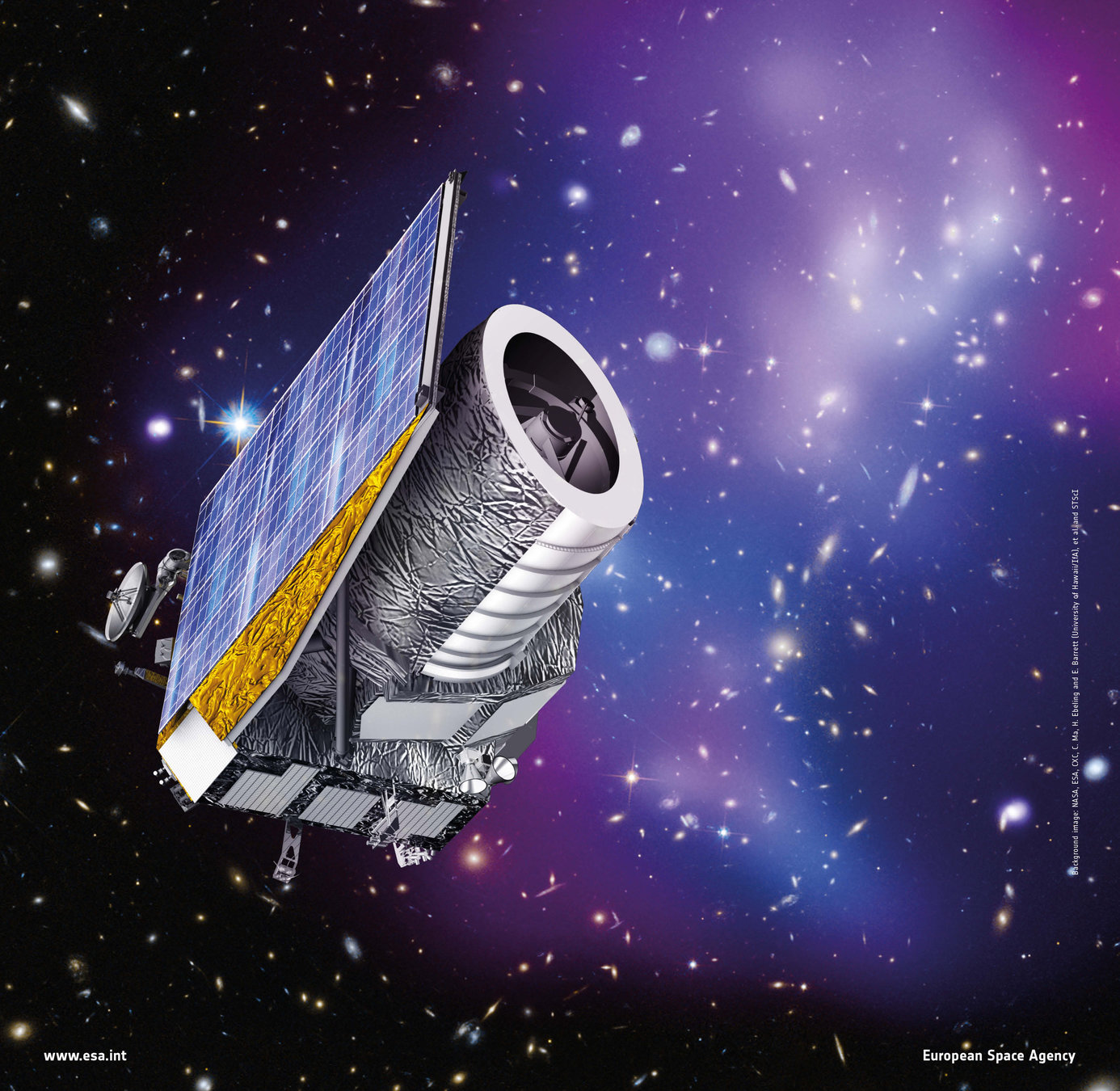
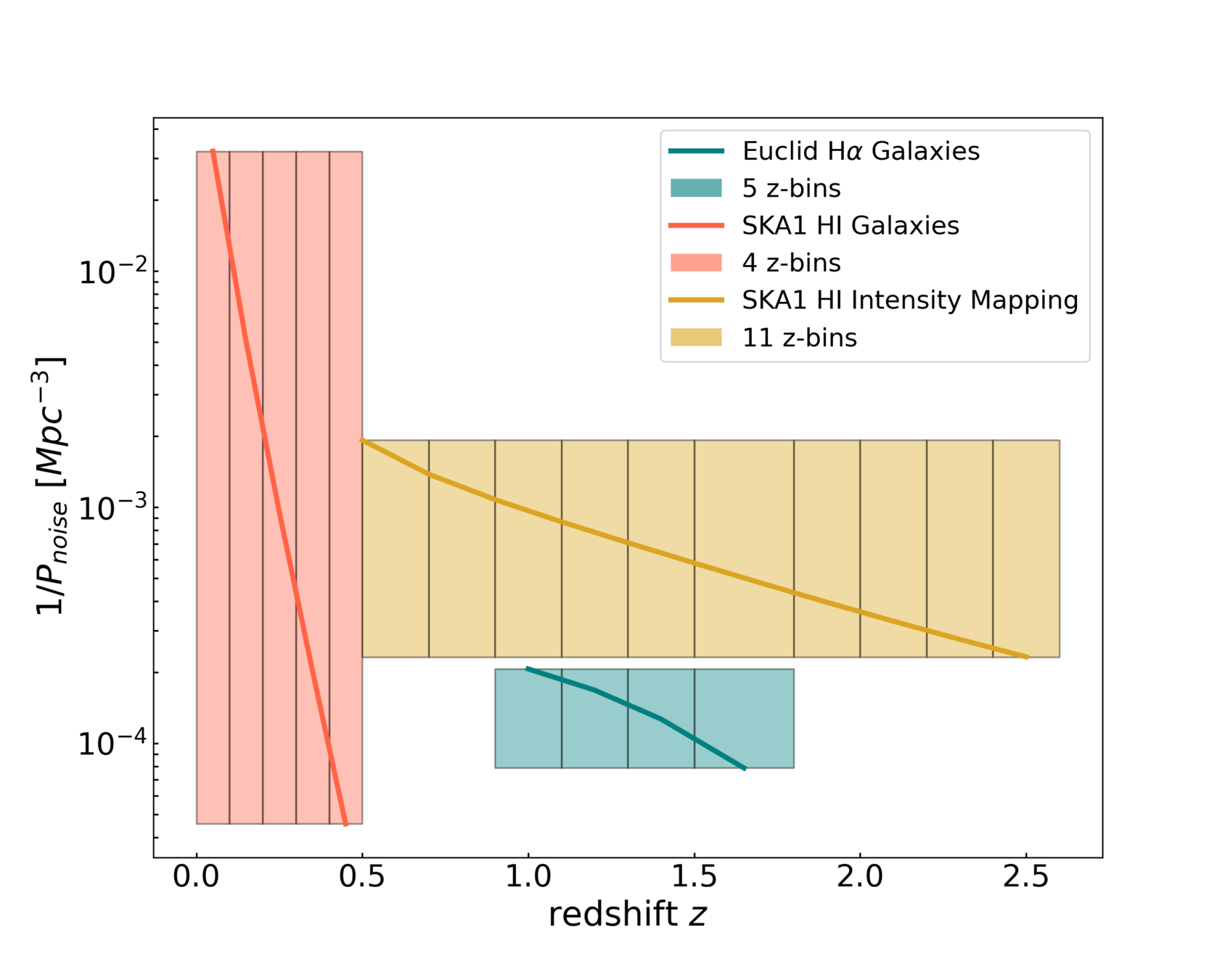
Text

Santiago Casas @ NineHubCR, 17.04.21

SKA1 Results
SKA1:
GC+WL+XC (Continuum) +
IM (HI 21cm) + GCsp(HI)
+ Planck'15
- Planck provides information on \(\Omega_{b}, \, \Omega_{m}\) but also on the MG parameter \(\Sigma\).
- In the \(\mu\)-\(\Sigma\) plane it complements very well with the IM constraints.
- Combined constraints on \(\Sigma\) ~ 1.5%

Text
Casas et al (2022)

Santiago Casas @ NineHubCR, 17.04.21

Text
Conclusiones
- La cosmología se ha vuelto una ciencia de precisión gracias a la radiación cósmica de microondas (CMB) y a los escaneos de redshifts de galaxias.
- Gracias a estas pruebas sabemos los componentes del Universo con precisión de 1%.
- No obstante, aún tenemos rangos en el tiempo y en escalas que no han sido explorados, que podrán ser explorados con la línea de 21cm de hídrogeno.
- Mucho que aprender sobre reionización, las épocas oscuras y las formaciones de estructura.
- Actuales y futuras observaciones con la línea de 21cm serán pruebas fundamentales de la gravedad y cosmología y resolverán las tensiones en los datos.
- El observatorio SKA y el satélite Euclid son muy complementarios en esta tarea. Aún mucho por descubrir!
Text


PRELIMINARY


SKA1 Surveys

HI galaxies spectroscopic survey
- GCsp: HI galaxy spec. redshift survey: \(0.0 < z < 0.5\)
probes 3D matter power spectrum in Fourier space.
SKA1 Redbook 2018, arXiv:1811.02743
SKA1 Medium Deep Band 2: \(5000 \, \rm{deg}^2\)


SKA1 Surveys
- GCsp: HI galaxy spec. redshift survey: \(0.0 < z < 0.5\)
probes 3D matter power spectrum in Fourier space -
GCco + WL + XCco (Continuum): \(0.0 < z < 3.0 \)
probes angular clustering of galaxies, Weak Lensing (Weyl potential) and galaxy-galaxy-lensing.
Angular number density:
\( n \approx 3.2 \rm{arcmin}^{-2}\)
SKA1 Redbook 2018, arXiv:1811.02743
SKA1 Medium Deep Band 2: \(5000 \, \rm{deg}^2\)

Continuum galaxy survey


SKA1 Surveys
- GCsp: HI galaxy spec. redshift survey: \(0.0 < z < 0.5\)
probes 3D matter power spectrum in Fourier space -
GCco + WL + XCco (Continuum): \(0.0 < z < 3.0 \)
probes angular clustering of galaxies, Weak Lensing (Weyl potential) and galaxy-galaxy-lensing.
Angular number density:
\( n \approx 3.2 \rm{arcmin}^{-2}\)
*kindly provided by Stefano Camera
SKA1 Medium Deep Band 2: \(5000 \, \rm{deg}^2\)
Continuum galaxy survey
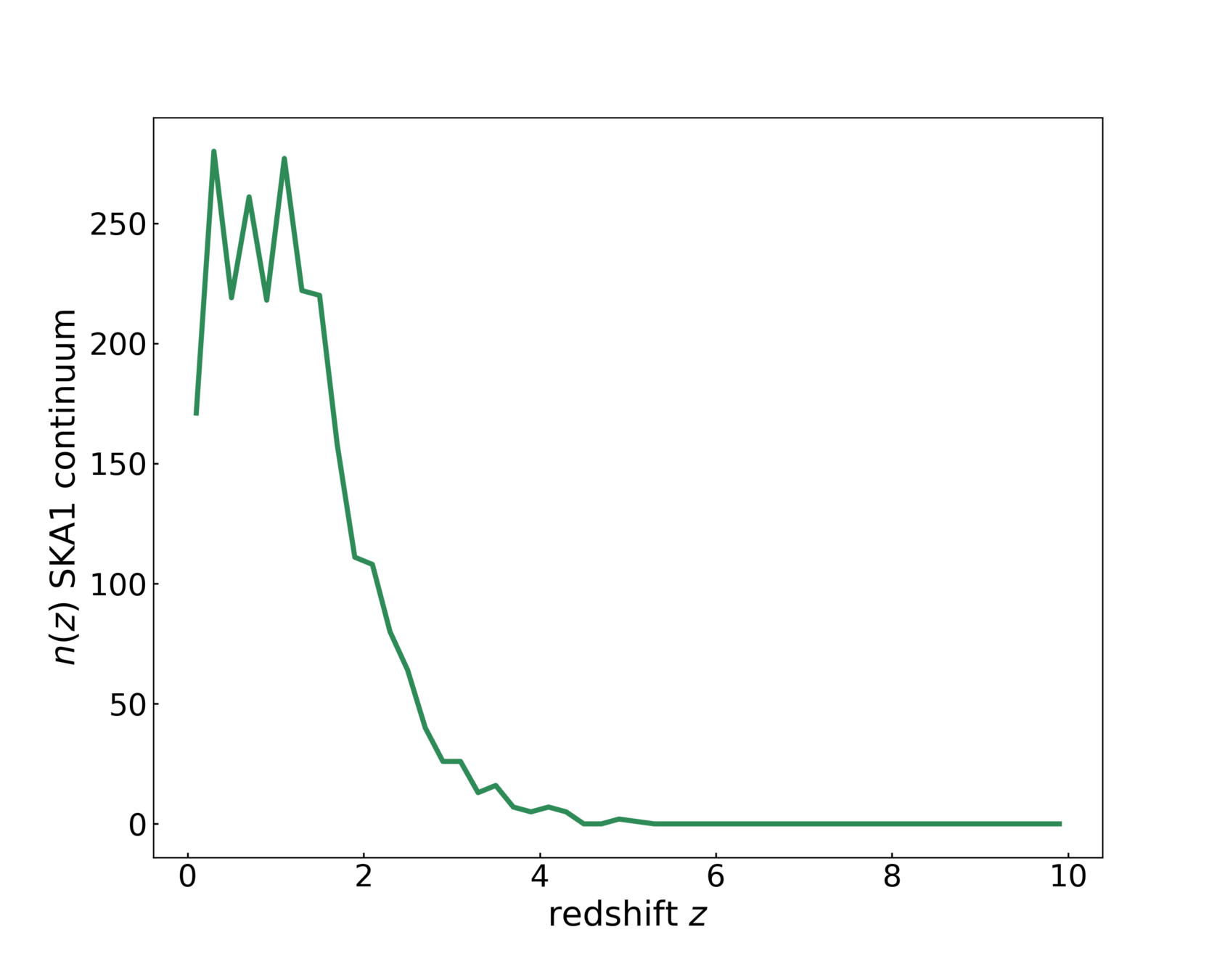
Backup slide

Backup slide

Backup slide

Backup slide

Backup slide

Backup slide
